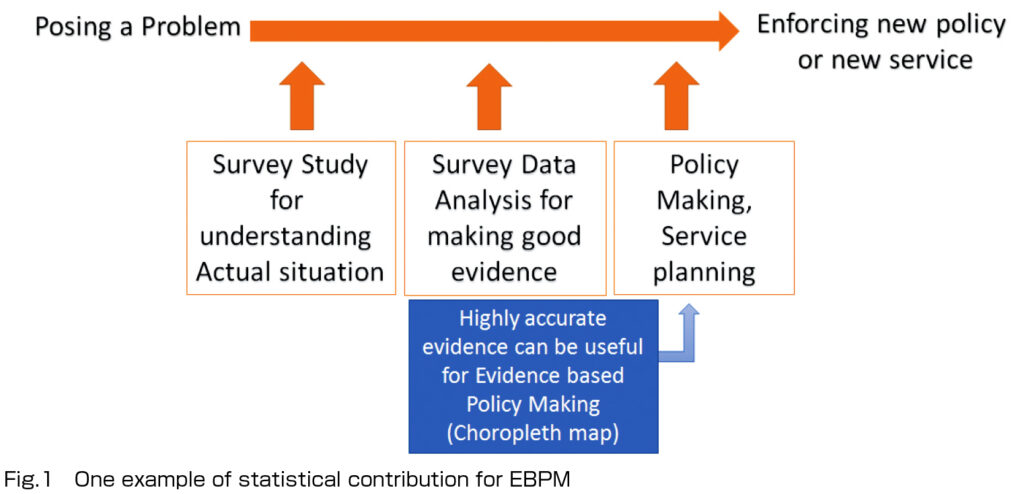Small Area Statistical Inference and its Application

HIROSE, Masayo
Degree: PhD (Engineering) (Osaka University)
Research interests: Statistical Science, Small area estimation, Mixed effect model
Recently, there is a growing importance of Evidence-Based Policy Making (EBPM). For estimating characteristic values of each small administrative division, the statistical model-based approach can get more efficiency of estimating method than the design-based approach. The concept of the model-based approach is “borrow strength from other areas” (Ghosh and Rao, 1994). That implies the approach can provide high-quality evidence for new policymaking or service planning. And also, it could contribute to solving some social problems (see Figure 1). Such statistical methodology has been accomplished the development especially in the research field of official statistics. Hereafter, we shall briefly introduce some of my researches about model-based approaches.
(1) Constructing Small Area Estimation Method
In estimating characteristic values of each small administrative division, model-based approach conduces the empirical best linear unbiased predictor under the assumed model, which minimizes the mean squared (prediction) error among any linear unbiased predictors in asymptotic sense. However, there are some practical issues of the existing empirical predictor still yet. Therefore, we have constructed a new statistical method which not only avoids a practical problem but also maintain efficiency in asymptotic sense. Moreover, we have addressed several issues for the development of confidence interval method for small area inference.
(2) Application to Survey Data
We are also interested in the application of our statistical method to real survey data to make high-quality evidence for EBPM. We already applied our model-based approach to Japanese consciousness survey data for understanding a consciousness trend of each small administrative division, like Cho-Chome. Moreover, we compared the approach with the conventional estimation method used in the Japanese public administrative research area. For more details, please see Hirose et al. (2018, JJSS/Japanese version)


